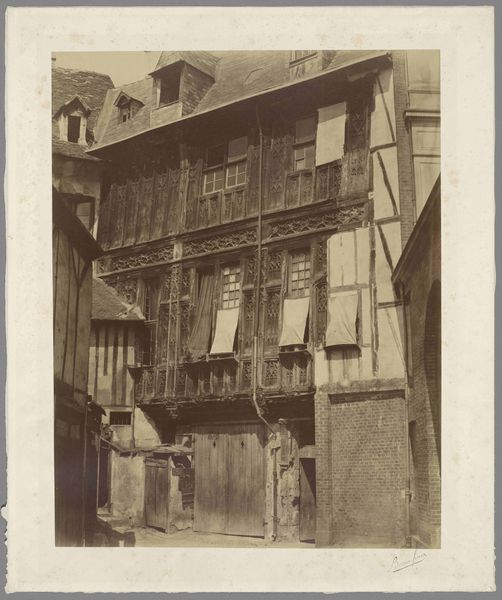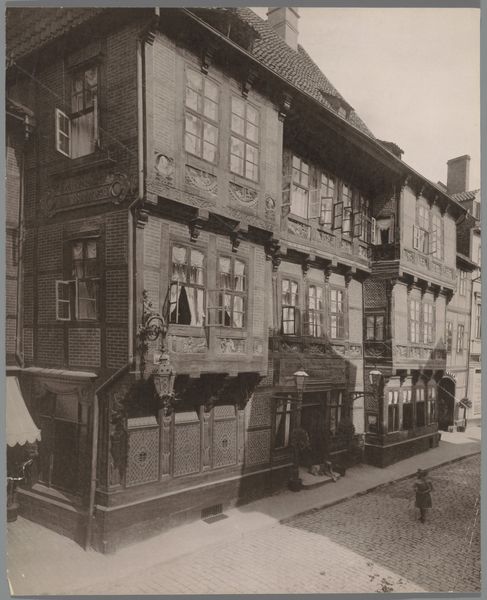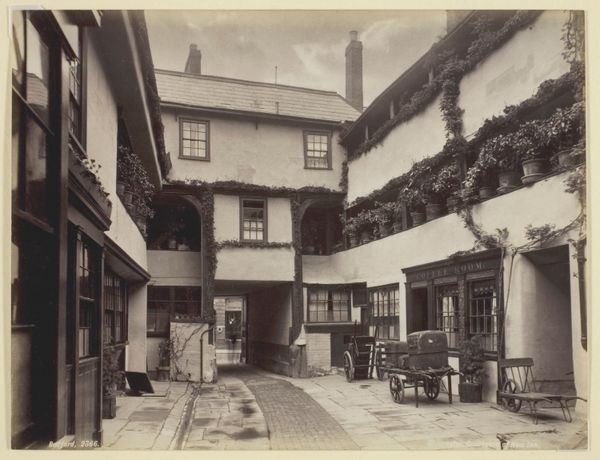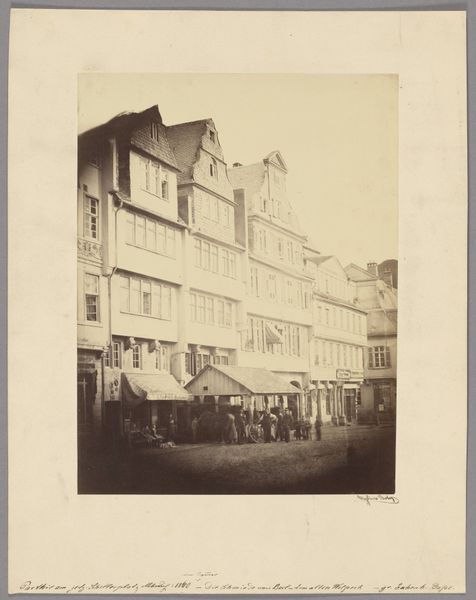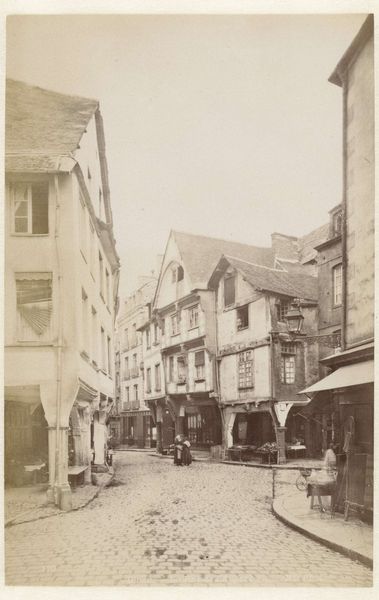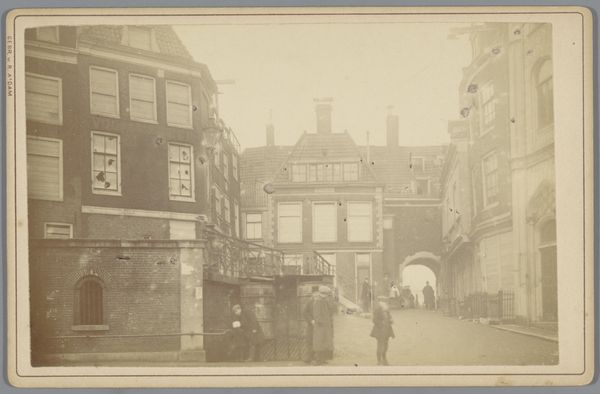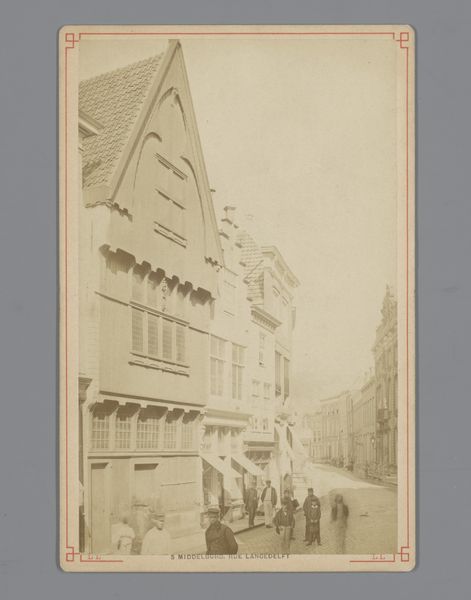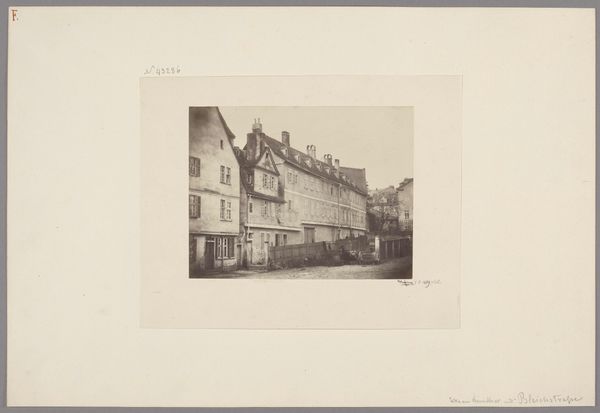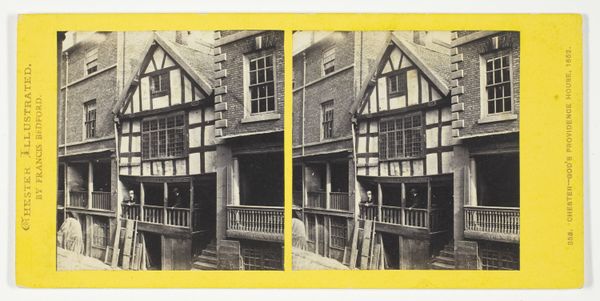
photography, gelatin-silver-print
#
photography
#
gelatin-silver-print
#
street
#
building
Dimensions: height 246 mm, width 356 mm
Copyright: Rijks Museum: Open Domain
Curator: Here we have “Two Views of Town Houses in Blois,” a gelatin silver print created by Médéric Mieusement, sometime between 1875 and 1900. Editor: It's quite charming! I’m immediately drawn to the contrasting textures – the rough stonework juxtaposed with the smoother plaster, and of course, the geometry of the windows. It almost feels like a stage set. Curator: Notice how Mieusement captures the very fabric of everyday life through his mastery of the gelatin silver process. He shows us the materials of the buildings, and therefore, of the city itself. Think about the labor involved in quarrying, transporting, and working that stone. It speaks volumes about Blois's economy and societal structure at the time. Editor: Absolutely. The architecture displayed provides an intriguing glimpse into the city's socio-economic strata and urban evolution. The presence of these ancient dwellings and the people within are telling stories of life during this era. And I love that the perspective, a seemingly random slice of city life, brings an unexpected democratic eye to the era. Curator: And consider the evolution of photographic technology itself. The accessibility of gelatin silver prints democratized image production and consumption. These images became not just artworks but also a kind of social documentation, circulating ideas about architectural styles and ways of living. Editor: Indeed. These were not only beautiful artifacts in themselves but powerful vehicles that promoted distinct representations of civic pride and culture. Curator: Examining it this way invites us to see the city not merely as bricks and mortar but as a nexus of social, economic, and technological forces. Editor: Well said! I see it now, beyond just the aesthetic appeal. Mieusement is really highlighting the narrative etched into the buildings' structure themselves.
Comments
No comments
Be the first to comment and join the conversation on the ultimate creative platform.
